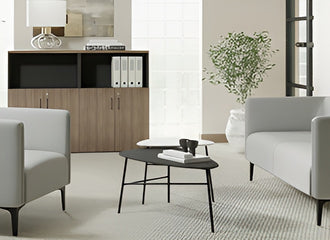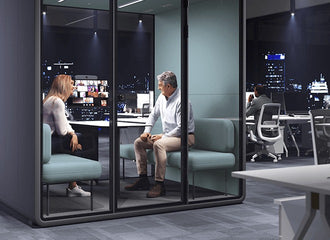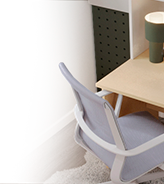Office tables: how to choose the right one for your office space
Office tables play a crucial role in providing functional work surfaces, facilitating meetings, and enhancing the overall aesthetics of your office environment. With a wide variety of options available, choosing the right office table can be a daunting task.
In this guide, we'll explore the factors to consider when selecting office tables, the different types of tables available, and tips for ensuring that your choice aligns with your office space and requirements.
Whether you're furnishing a conference room, collaborative workspace, or individual office, let us help you navigate the selection process and find the perfect office table to suit your needs.
Why office tables are one of the most critical pieces of office furniture in any business
Office tables are among the most critical pieces of furniture in any business for several compelling reasons.
Firstly, they serve as central hubs for various activities, including meetings, collaborative work, individual tasks, and client interactions. Whether it's a conference table for hosting important discussions or a workstation desk for daily work, office tables provide essential surfaces where employees can accomplish their tasks efficiently and effectively.
Additionally, office tables play a significant role in shaping the layout and functionality of the workspace, influencing traffic flow, communication patterns, and overall productivity.
Furthermore, the design and quality of office tables can impact the impression that clients, visitors, and employees have of the business, reflecting its professionalism, culture, and values.
Ultimately, investing in high-quality office tables is essential for creating a functional, comfortable, and conducive work environment that supports the success and growth of the business.
Boardroom tables and meeting tables: how to choose the right option for your team
When selecting between boardroom tables and meeting tables, it's crucial to consider the specific needs and dynamics of your team and workspace.
Boardroom tables are typically larger and more formal, designed for hosting executive meetings, presentations, and important discussions. They often feature high-quality materials and sophisticated designs, reflecting the professional image of the company.
On the other hand, meeting tables are more versatile and adaptable, suitable for various types of meetings, brainstorming sessions, and collaborative work. They come in a range of sizes and configurations, offering flexibility to accommodate different group sizes and meeting formats.
When choosing between the two options, consider factors such as the size of your team, the frequency and nature of your meetings, the available space in your office, and your budget constraints. By carefully assessing these factors, you can choose the right table option that meets the needs of your team and enhances collaboration and productivity in your workspace.
Round meeting tables vs rectangular meeting tables - what's best for your office space?
When deciding between round meeting tables and rectangular meeting tables for your office space, it's essential to consider several factors to determine which option is best suited to your needs:
Space Utilization: Round meeting tables are often more space-efficient than rectangular tables, as they eliminate sharp corners and allow for easier movement around the table. This can be beneficial in smaller meeting rooms or areas with limited space. Rectangular tables, on the other hand, may require more floor space but can accommodate a larger number of people along the length of the table.
Visual Aesthetics: The shape of the meeting table can significantly impact the overall aesthetics of the room. Round tables often create a more inviting and inclusive atmosphere, as they facilitate face-to-face communication and equal participation among all attendees. Rectangular tables, while more traditional, can convey a sense of formality and structure, which may be suitable for boardroom settings or formal meetings.
Meeting Dynamics: Consider the nature of your meetings and how the table shape may influence communication and collaboration. Round tables encourage discussion and interaction among participants, as there are no distinct "head" or "end" positions. This setup can be ideal for brainstorming sessions, team meetings, or collaborative work. Rectangular tables, with their defined seating arrangements, may be better suited for presentations, seminars, or meetings where one person leads the discussion.
Functionality and Flexibility: Think about the versatility of the table shape and how it aligns with your office's needs. Round tables can be easily rearranged or combined to accommodate different group sizes or meeting formats. They also offer flexibility in seating arrangements, allowing participants to sit closer together and engage in more intimate discussions. Rectangular tables, while less flexible in terms of shape, may offer more surface area for materials, documents, or technology equipment during meetings.
Budget Considerations: Finally, consider your budget constraints when choosing between round and rectangular meeting tables. Round tables may be more cost-effective for smaller meetings or casual settings, while rectangular tables may require a larger investment upfront but offer greater seating capacity and versatility over time.
Office table tops: what to look out for
When selecting office table tops, several factors should be considered to ensure you choose the best option for your workspace:
Material: Office table tops are available in a variety of materials, including wood, laminate, glass, metal, and composite materials. Consider factors such as durability, aesthetics, and maintenance requirements when choosing the material. Wood tops offer warmth and natural beauty but may require more maintenance than laminate or glass tops. Glass tops provide a sleek and modern look but may be more prone to scratches and fingerprints.
Size and Shape: Determine the appropriate size and shape of the table top based on the intended use and available space in your office. Consider factors such as the number of users, the type of work being performed, and any specific requirements for seating arrangements or equipment placement. Rectangular, square, round, and oval shapes are common options, each offering distinct advantages depending on the application.
Thickness: The thickness of the table top can impact its durability, stability, and aesthetic appeal. Thicker tops are generally more robust and can withstand heavy use, while thinner tops may be lighter and more streamlined in appearance. Consider the intended use and desired aesthetic when selecting the thickness of the table top.
Edge Profile: The edge profile of the table top can influence both the appearance and comfort of the table. Common edge profiles include square, rounded, beveled, and bullnose edges. Choose an edge profile that complements the overall design of your office furniture and provides a comfortable work surface for users.
Finish and Color: Select a finish and color for the table top that complements the existing decor and design scheme of your office. Whether you prefer a natural wood finish, a high-gloss laminate, or a matte painted surface, choose a finish that enhances the aesthetics of your workspace and reflects your company's style and branding.
Compatibility: If you are replacing an existing table top or integrating it with other office furniture, ensure compatibility with the base or legs of the table. Measure the dimensions and mounting options of the base to ensure a proper fit with the new table top.
Budget: Consider your budget constraints when selecting office table tops. While high-quality materials and finishes may come at a higher cost, investing in durable and aesthetically pleasing table tops can enhance the overall look and functionality of your workspace in the long run.
Coffee tables: how to choose the right one for your office
Choosing the right coffee table for your office involves considering several key factors to ensure it meets your needs and complements your workspace effectively:
Functionality: Determine how the coffee table will be used in your office. Will it primarily serve as a surface for placing drinks and snacks during meetings and casual discussions, or will it also be used for additional storage or display purposes? Understanding the intended function of the coffee table will help you narrow down your options and choose a design that best suits your needs.
Size and Shape: Consider the available space in your office and the layout of the room when selecting the size and shape of the coffee table. A smaller coffee table may be more suitable for compact or narrow spaces, while a larger table can serve as a focal point in a spacious lounge area. Additionally, consider the shape of the table—round tables can promote better flow and circulation in the room, while square or rectangular tables may offer more surface area for items.
Material and Style: Choose a material and style for the coffee table that complements the existing decor and design aesthetic of your office. Common materials for coffee tables include wood, glass, metal, and composite materials, each offering unique aesthetics and durability. Consider factors such as maintenance requirements, durability, and visual appeal when selecting the material and style of the table.
Storage Options: If you require additional storage space in your office, consider coffee tables with built-in storage options such as drawers, shelves, or compartments. These features can help keep the tabletop clutter-free and organized, allowing you to store magazines, remote controls, office supplies, or other items conveniently within reach.
Mobility: Depending on your office layout and needs, you may prefer a coffee table with wheels or casters that can be easily moved or repositioned as needed. This can be particularly useful in collaborative workspaces or meeting areas where flexibility and adaptability are important.
Budget: Set a budget for your coffee table purchase and explore options within your price range. While higher-priced coffee tables may offer premium materials, craftsmanship, and features, there are also affordable options available that can meet your needs without exceeding your budget.
Side tables
Side tables offer several benefits when incorporated into office spaces:
Convenience: Side tables provide convenient surfaces for employees to place personal belongings, such as phones, laptops, notebooks, or drinks, within arm's reach. This helps keep essential items easily accessible during work hours, reducing the need for frequent trips to other areas of the office.
Space Optimization: Side tables are typically compact in size, making them ideal for small or narrow spaces where larger furniture pieces may not fit. They can be strategically placed next to desks, chairs, or lounge seating to maximize the use of available space without overcrowding the area.
Versatility: Side tables are versatile pieces of furniture that can serve multiple purposes in an office setting. In addition to providing surfaces for personal items, they can be used as temporary workstations for impromptu meetings, quick brainstorming sessions, or informal discussions with colleagues.
Enhanced Comfort: Placing side tables next to lounge chairs or seating areas creates cozy and inviting spaces for employees to relax, unwind, or collaborate outside of formal meeting rooms or workstations. This promotes a more comfortable and welcoming office environment, contributing to employee well-being and satisfaction.
Aesthetic Appeal: Side tables come in a variety of styles, materials, and finishes, allowing businesses to choose options that complement the overall decor and design aesthetic of the office. Whether sleek and modern or classic and traditional, side tables can enhance the visual appeal of the workspace and contribute to a cohesive and stylish interior design.
Organization: By providing designated surfaces for personal items, side tables help keep workspaces organized and clutter-free. Employees can easily store and access essential items without having to search through drawers or cabinets, leading to increased efficiency and productivity.
Flexibility: Side tables are easy to move and reposition, allowing businesses to adapt and reconfigure office layouts as needed. They can be used temporarily in different areas of the office or relocated to accommodate changing needs or preferences, providing flexibility in workspace design and usage.
How to choose the right café tables
Choosing the right café tables involves considering several factors to ensure they meet the needs of your café and complement its overall design aesthetic:
Space Constraints: Assess the available space in your café, including floor space and seating capacity, to determine the size and quantity of tables needed. Consider the layout of the café and how tables will be arranged to optimize traffic flow and accommodate different group sizes.
Table Size and Shape: Select table sizes and shapes that suit the layout of your café and the type of dining experience you want to offer. Round tables encourage conversation and social interaction, making them ideal for smaller groups or intimate settings. Square or rectangular tables are more space-efficient and can accommodate larger groups or be pushed together to create communal seating areas.
Material and Durability: Choose café tables made from durable materials that can withstand heavy use and frequent cleaning. Common materials for café tables include wood, metal, laminate, and composite materials. Consider factors such as durability, ease of maintenance, and resistance to stains, scratches, and moisture when selecting the material.
Style and Aesthetic: Ensure that the style and design of the café tables complement the overall décor and ambiance of your café. Whether you prefer a modern, minimalist look or a rustic, farmhouse-inspired vibe, choose tables that reflect the theme and atmosphere you want to create in your café.
Seating Arrangements: Consider how café tables will be paired with seating options, such as chairs, bar stools, or benches. Ensure that tables and chairs are proportionate in size and height to provide comfortable and ergonomic seating for patrons. Experiment with different seating arrangements to create a variety of dining experiences, from cozy corners to communal dining areas.
Versatility and Flexibility: Opt for café tables that offer versatility and flexibility in their usage. Choose tables that can be easily moved, rearranged, or combined to accommodate different group sizes, seating arrangements, or events. This flexibility allows you to adapt your café layout to changing needs or preferences and maximize the use of space.
Budget Considerations: Set a budget for purchasing café tables and explore options within your price range. Consider factors such as material quality, durability, and design aesthetics when comparing different table options. While investing in high-quality tables may require a higher upfront cost, it can result in long-term savings by reducing maintenance and replacement expenses.
Shop our range of office tables - fast delivery across Australia
Discover our diverse selection of office tables and elevate your workspace with ease. Whether you're in need of conference tables, workstation desks, or coffee tables, we have the perfect option to suit your office's needs and style.
With fast delivery across Australia, you can shop with confidence and have your new office tables delivered straight to your door in no time. Don't wait any longer to create the productive and stylish workspace you deserve – shop our range of office tables today!


![Quadro A Legs Modern Boardroom Table - Rounded Corners [1800L x 1100W with Rounded Corners] Jasonl black leg dark oak](http://www.jasonl.com.au/cdn/shop/files/quadro-a-legs-modern-boardroom-table-rounded-corners-1800l-x-1100w-with-rounded-corners-270435_533x.jpg?v=1725171337)


![Quadro A Legs Modern Boardroom Table - Rounded Corners [3200L x 1100W with Rounded Corners] Jasonl black leg salvage oak none](http://www.jasonl.com.au/cdn/shop/files/quadro-a-legs-modern-boardroom-table-rounded-corners-3200l-x-1100w-with-rounded-corners-275175_533x.jpg?v=1725174468)


![Sapphire Tall Round Bar Counter Table - Disc Base [600 mm] Jasonl 450mm black base white](http://www.jasonl.com.au/cdn/shop/products/sapphire-tall-round-bar-counter-table-disc-base-600-mm-940552_533x.jpg?v=1660357367)


![Baobab Circular Base Cafe Table [1350mm] Jasonl 540mm white base none](http://www.jasonl.com.au/cdn/shop/files/baobab-circular-base-cafe-table-1350mm-814019_533x.jpg?v=1737549919)


![Baobab Circular Base Counter Cafe Table [600mm] Jasonl 400mm white base none](http://www.jasonl.com.au/cdn/shop/files/baobab-circular-base-counter-cafe-table-600mm-398902_533x.jpg?v=1737550700)


![Baobab Circular Base Cafe Table [600 mm] Jasonl 400mm white base none](http://www.jasonl.com.au/cdn/shop/files/baobab-circular-base-cafe-table-600-mm-662078_533x.jpg?v=1737550226)


![Universal Table Base - Round [600 mm] Jasonl White white](http://www.jasonl.com.au/cdn/shop/products/universal-table-base-round-600-mm-425564_533x.jpg?v=1660376037)


![Quadro A Legs Large Counter Table [2400L x 700W] Jasonl black leg salvage oak none](http://www.jasonl.com.au/cdn/shop/products/quadro-a-legs-large-counter-table-2400l-x-700w-475399_533x.jpg?v=1665407418)


![Universal Table Base - Square [600L x 600W] Jasonl White white](http://www.jasonl.com.au/cdn/shop/products/universal-table-base-square-600l-x-600w-375040_533x.jpg?v=1657793406)


![Sapphire Cafe Table - Disc Base [600 mm] Jasonl 450mm white base white](http://www.jasonl.com.au/cdn/shop/products/sapphire-cafe-table-disc-base-600-mm-114551_533x.jpg?v=1660358420)


![Sapphire Round Meeting Table - Disc Base [1000 mm] Jasonl 540mm black base white](http://www.jasonl.com.au/cdn/shop/products/sapphire-round-meeting-table-disc-base-1000-mm-944539_533x.jpg?v=1660359411)


![Sapphire XL Round Conference Table - Disc Base [1350mm] Jasonl 720mm black base white](http://www.jasonl.com.au/cdn/shop/products/sapphire-xl-round-conference-table-disc-base-1350mm-849653_533x.jpg?v=1668957561)


![Quadro Square Legs Modern Boardroom Table - Rounded Corners [1800L x 1100W with Rounded Corners] Jasonl black leg salvage oak](http://www.jasonl.com.au/cdn/shop/files/quadro-square-legs-modern-boardroom-table-rounded-corners-1800l-x-1100w-with-rounded-corners-346874_533x.jpg?v=1725167357)


![Jasonl Flip Top/Folding Mobile Meeting Room Table - Solana [1200L x 700W] Jasonl white leg white none](http://www.jasonl.com.au/cdn/shop/files/jasonl-flip-topfolding-mobile-meeting-room-table-solana-1200l-x-700w-452189_533x.jpg?v=1701579249)


![Quadro Square Legs Counter Table [1200L x 700W] Jasonl black leg salvage oak](http://www.jasonl.com.au/cdn/shop/products/quadro-square-legs-counter-table-1200l-x-700w-526583_533x.jpg?v=1665407394)


![Sapphire Rectangle Boardroom Table - Disc Base with Rounded Corners [1800L x 1100W with Rounded Corners] Jasonl black base white](http://www.jasonl.com.au/cdn/shop/files/sapphire-rectangle-boardroom-table-disc-base-with-rounded-corners-1800l-x-1100w-with-rounded-corners-903984_533x.jpg?v=1725184909)


![Quadro Loop Legs Modern Boardroom Table - Rounded Corners [3200L x 1100W with Rounded Corners] Jasonl white leg white none](http://www.jasonl.com.au/cdn/shop/files/quadro-loop-legs-modern-boardroom-table-rounded-corners-3200l-x-1100w-with-rounded-corners-645384_533x.jpg?v=1725174596)


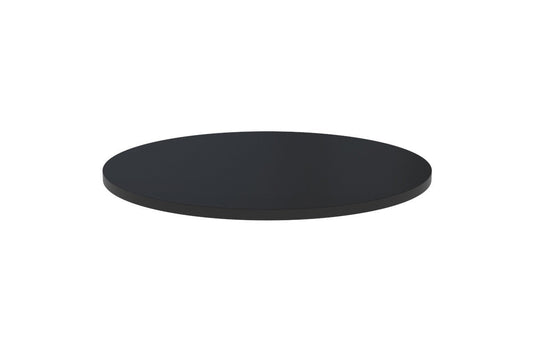


![JasonL Melamine Table Top - Round [600 mm] Jasonl maple](http://www.jasonl.com.au/cdn/shop/products/jasonl-melamine-table-top-round-600-mm-382076_533x.jpg?v=1627091988)


![Universal Round Meeting Table [800 mm] Jasonl Black leg white](http://www.jasonl.com.au/cdn/shop/products/universal-round-meeting-table-800-mm-759511_533x.jpg?v=1657789920)


![Sapphire Rectangle Boardroom Table - Disc Base [2400L x 1200W] Jasonl black base white](http://www.jasonl.com.au/cdn/shop/files/sapphire-rectangle-boardroom-table-disc-base-2400l-x-1200w-480459_533x.jpg?v=1705485650)


![Quadro Modern Boardroom Table [2400L x 1200W] Jasonl black leg maple](http://www.jasonl.com.au/cdn/shop/products/quadro-modern-boardroom-table-2400l-x-1200w-574418_533x.jpg?v=1657041841)


![Switch Collaborative Counter High Table [2400L x 800W] Jasonl wood imprint leg white](http://www.jasonl.com.au/cdn/shop/products/switch-collaborative-counter-high-table-2400l-x-800w-686237_533x.jpg?v=1674641483)


![Quadro Modern Boardroom Table [3600L x 1200W] Jasonl white leg black](http://www.jasonl.com.au/cdn/shop/products/quadro-modern-boardroom-table-3600l-x-1200w-114915_533x.jpg?v=1643696941)


![Quadro Loop Legs Modern Boardroom Table - Rounded Corners [1800L x 1100W with Rounded Corners] Jasonl black leg salvage oak](http://www.jasonl.com.au/cdn/shop/files/quadro-loop-legs-modern-boardroom-table-rounded-corners-1800l-x-1100w-with-rounded-corners-877843_533x.jpg?v=1725186089)


![Switch Meeting Room Table [2400L x 1200W] Jasonl Wood imprint white](http://www.jasonl.com.au/cdn/shop/products/switch-meeting-room-table-2400l-x-1200w-648517_533x.jpg?v=1660373733)


![Quadro A Legs Counter Table with Rounded Corners [3200L x 1100W with Rounded Corners] Jasonl white leg white none](http://www.jasonl.com.au/cdn/shop/files/quadro-a-legs-counter-table-with-rounded-corners-3200l-x-1100w-with-rounded-corners-731829_533x.jpg?v=1725178180)


![Universal Round Meeting Table [600 mm] Jasonl Black leg white](http://www.jasonl.com.au/cdn/shop/products/universal-round-meeting-table-600-mm-526264_533x.jpg?v=1657792296)


![Quadro A Legs Modern Boardroom Table Wood Legs - Rounded Corners [1800L x 1100W with Rounded Corners] Jasonl black leg dark oak](http://www.jasonl.com.au/cdn/shop/files/quadro-a-legs-modern-boardroom-table-wood-legs-rounded-corners-1800l-x-1100w-with-rounded-corners-111407_533x.jpg?v=1725190801)


![Quadro A Legs Counter Table with Rounded Corners [1800L x 1100W with Rounded Corners] Jasonl white leg white none](http://www.jasonl.com.au/cdn/shop/files/quadro-a-legs-counter-table-with-rounded-corners-1800l-x-1100w-with-rounded-corners-916240_533x.jpg?v=1725177190)


![JasonL Melamine Table Top - Rectangle [1200L x 700W] Jasonl white](http://www.jasonl.com.au/cdn/shop/files/jasonl-melamine-table-top-rectangle-1200l-x-700w-933223_533x.jpg?v=1723804602)


![JasonL Melamine Table Top - Round [1000 mm] Jasonl maple](http://www.jasonl.com.au/cdn/shop/products/jasonl-melamine-table-top-round-1000-mm-377620_533x.jpg?v=1627021804)


![Universal Dry Bar Table Base - Round [600 mm] Jasonl White white](http://www.jasonl.com.au/cdn/shop/products/universal-dry-bar-table-base-round-600-mm-490556_533x.jpg?v=1657764866)


![Quadro Wood Single Leg Round Table [1000 mm] Jasonl black bracket salvage oak](http://www.jasonl.com.au/cdn/shop/products/quadro-wood-single-leg-round-table-1000-mm-851583_533x.jpg?v=1665407591)


![Quadro A Legs Modern Boardroom Table Wood Legs - Rounded Corners [3200L x 1100W with Rounded Corners] Jasonl black leg salvage oak none](http://www.jasonl.com.au/cdn/shop/files/quadro-a-legs-modern-boardroom-table-wood-legs-rounded-corners-3200l-x-1100w-with-rounded-corners-246755_533x.jpg?v=1725164064)


![JasonL Melamine Table Top - Square [800L x 800W] Jasonl maple](http://www.jasonl.com.au/cdn/shop/products/jasonl-melamine-table-top-square-800l-x-800w-468845_533x.jpg?v=1627118391)


![Quadro Square Legs Modern Boardroom Table - Rounded Corners [3200L x 1100W with Rounded Corners] Jasonl white leg white none](http://www.jasonl.com.au/cdn/shop/files/quadro-square-legs-modern-boardroom-table-rounded-corners-3200l-x-1100w-with-rounded-corners-919090_533x.jpg?v=1725187943)


![Sapphire Round Meeting Table - Disc Base [600 mm] Jasonl 450mm black base white](http://www.jasonl.com.au/cdn/shop/products/sapphire-round-meeting-table-disc-base-600-mm-555977_533x.jpg?v=1660351679)


![Universal Twin B Table Base [1000L x 600W] Jasonl Black white](http://www.jasonl.com.au/cdn/shop/products/universal-twin-b-table-base-1000l-x-600w-605366_533x.jpg?v=1657789011)


![Baobab Circular Wood Base Counter Round Table [700mm] Jasonl white leg white](http://www.jasonl.com.au/cdn/shop/files/baobab-circular-wood-base-counter-round-table-700mm-607906_533x.jpg?v=1702378596)


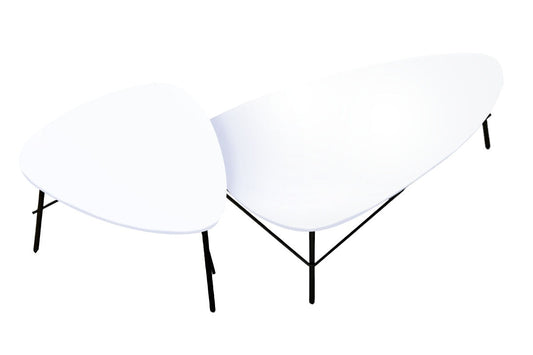


![Switch Meeting Room Table - Rounded Corners [3200L x 1100W with Rounded Corners] Jasonl white leg white](http://www.jasonl.com.au/cdn/shop/files/switch-meeting-room-table-rounded-corners-3200l-x-1100w-with-rounded-corners-599005_533x.jpg?v=1725185280)


![Quadro A Legs Table [1000L x 600W] Jasonl black leg salvage oak](http://www.jasonl.com.au/cdn/shop/products/quadro-a-legs-table-1000l-x-600w-920729_533x.jpg?v=1683755079)


![Rivoli Tall Bar Table Round Base Black/Rose Gold - Black Disc [600 mm] Jasonl white](http://www.jasonl.com.au/cdn/shop/products/rivoli-tall-bar-table-round-base-blackrose-gold-black-disc-600-mm-869053_533x.jpg?v=1660358891)


![Switch Round Meeting Table [700 mm] Jasonl white leg white](http://www.jasonl.com.au/cdn/shop/products/switch-round-meeting-table-700-mm-213835_533x.jpg?v=1660357038)


![Universal Dry Bar Table Base - Square [700L x 700W] Jasonl White white](http://www.jasonl.com.au/cdn/shop/products/universal-dry-bar-table-base-square-700l-x-700w-599169_533x.jpg?v=1657778435)


